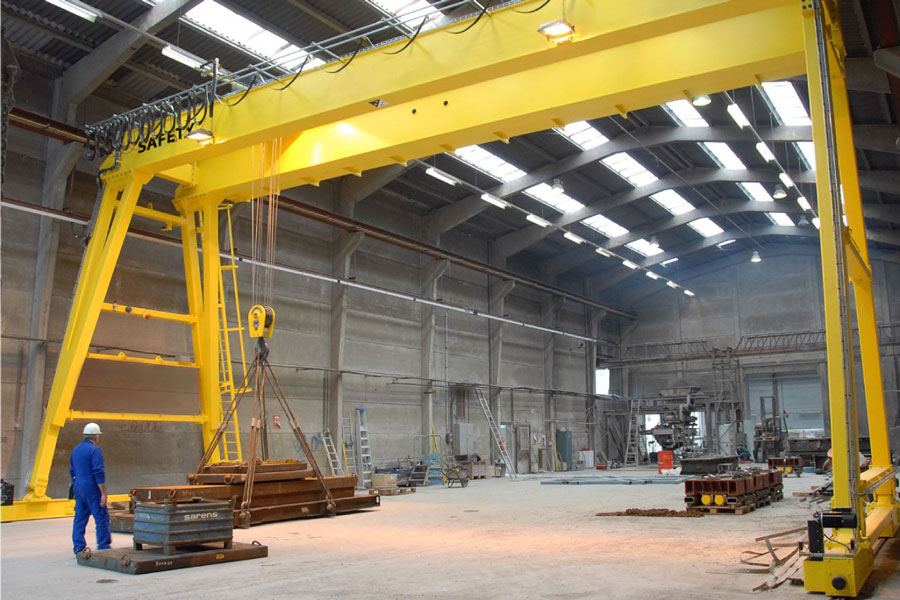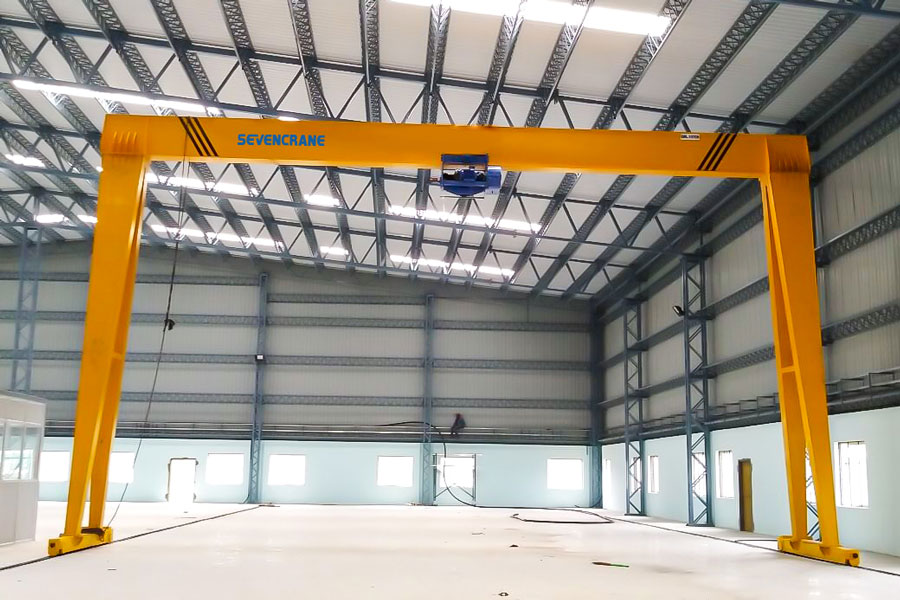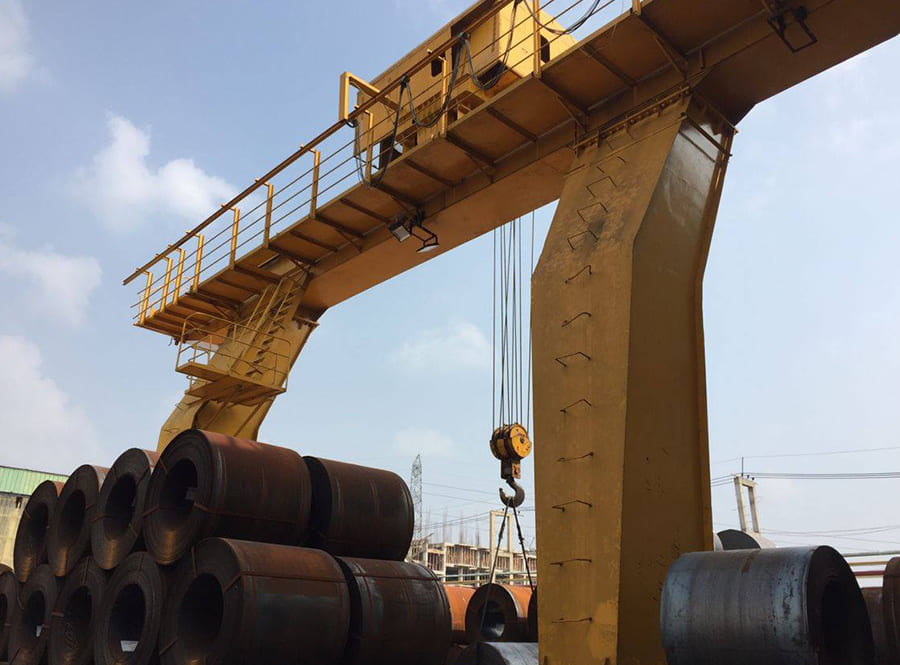An indoor gantry crane is a bridge-type crane in which the bridge is supported on the ground track by legs on both sides. Structurally, it consists of a mast, a trolley operating mechanism, a lifting trolley and electrical parts. Some gantry cranes only have outriggers on one side, and the other side is supported on the factory building or trestle, which is called a semi-gantry crane. The gantry crane is composed of the upper bridge frame (including main beam and end beam), outriggers, lower beam and other parts. In order to expand the operating range of the crane, the main beam can extend beyond the outriggers to one or both sides to form a cantilever. A lifting trolley with a boom can also be used to expand the crane’s operating range through the pitching and rotation of the boom. Gantry cranes can be classified according to the structure of the door frame, the form of the main beam, the structure of the main beam, and the form of use.

The most complete classification of gantry cranes by appearance and structure type, including a classification introduction of all gantry cranes. Understanding the classification of gantry cranes is more conducive to choosing and purchasing cranes. Different types of cranes have different classifications. You can refer to the previous article, which is the most complete The most detailed specifications and representations of various crane models. According to the structural form of the crane door frame, it can be divided into portálový žeriav and cantilever gantry crane.
Gantry cranes are divided into:
1. Full gantry crane: the main beam has no overhang, and the trolley moves within the main span.
2. Semi-gantry crane: According to the on-site civil construction requirements, the height of the outriggers varies.
Cantilever gantry cranes are divided into:
1. Double cantilever gantry crane: one of the most common structural forms, its structural stress and effective use of site area are reasonable.
2. Single cantilever gantry crane: Due to site restrictions, this structure is usually selected.
2. Classification according to the shape and type of the main beam of the gantry crane:
Complete classification of single main girder gantry cranes
The portálový žeriav s jedným nosníkom has a simple structure, is easy to manufacture and install, and has a small mass. Most of the main beams are inclined rail box frame structures. Compared with dvojnosníkový portálový žeriav, the overall stiffness is weaker. Therefore, when the lifting weight Q≤50 tons and the span S≤35m, this table can be used. Rail mounted indoor gantry crane for sale door legs are available in L-type and C-type. The L-shaped model is easy to install, has good force resistance, and has a small mass, but the space for lifting goods through the legs is relatively small. The C-shaped legs are slanted or bent to provide a larger horizontal space for cargo to pass smoothly through the legs.
Complete classification of double main girder gantry cranes
Double-girder gantry cranes indoor have strong load-bearing capacity, large spans, good overall stability, and many varieties. However, their own mass is larger than single-girder gantry cranes with the same lifting capacity, and their costs are also higher. According to the different main beam structures, it can be divided into two forms: box beam and truss. At present, box-type structures are commonly used.
Classification according to the main beam structure of gantry crane:
1.Truss beam
It adopts angle steel or I-beam welded structure, which has the advantages of low top choice for indoor gantry crane cost, light weight and good wind resistance. However, due to the large number of welding points, the truss itself has defects. The truss beam also has shortcomings such as large deflection, low stiffness, low reliability, and the need for frequent detection of welding points. It is suitable for sites with low safety requirements and small lifting weight.
2.Box beam
The steel plates are welded into a box-shaped structure, which has the characteristics of high safety and high stiffness. Generally used for large tonnage and large tonnage european standard indoor gantry crane. As shown in the picture on the right, MGhz1200 has a lifting capacity of 1,200 tons and is the largest gantry crane in China. The main beam adopts box beam structure. Box beams also have the disadvantages of high cost, dead weight, and poor wind resistance.

3.Honeycomb beam
Generally called “isosceles triangle honeycomb beam”, the end face of the main beam is triangular, and there are honeycomb holes on both sides of the oblique belly, upper and lower chords. Cellular beams absorb the characteristics of truss beams and box beams, and have greater stiffness, smaller deflection and higher reliability than truss beams. However, due to the welding of steel plates, the self-weight and cost are slightly higher than those of truss beams. Suitable for frequent use or heavy lifting sites or beam sites. Because this type of beam is a proprietary product, there are fewer manufacturers.
The above content is about the detailed classification and introduction of various types of gantry cranes. If you want to know more detailed knowledge about CE approved indoor gantry crane price, please feel free to leave a message on this website or contact us by phone. SEVENCRANE sales staff are always online waiting for your call to inquire.





















